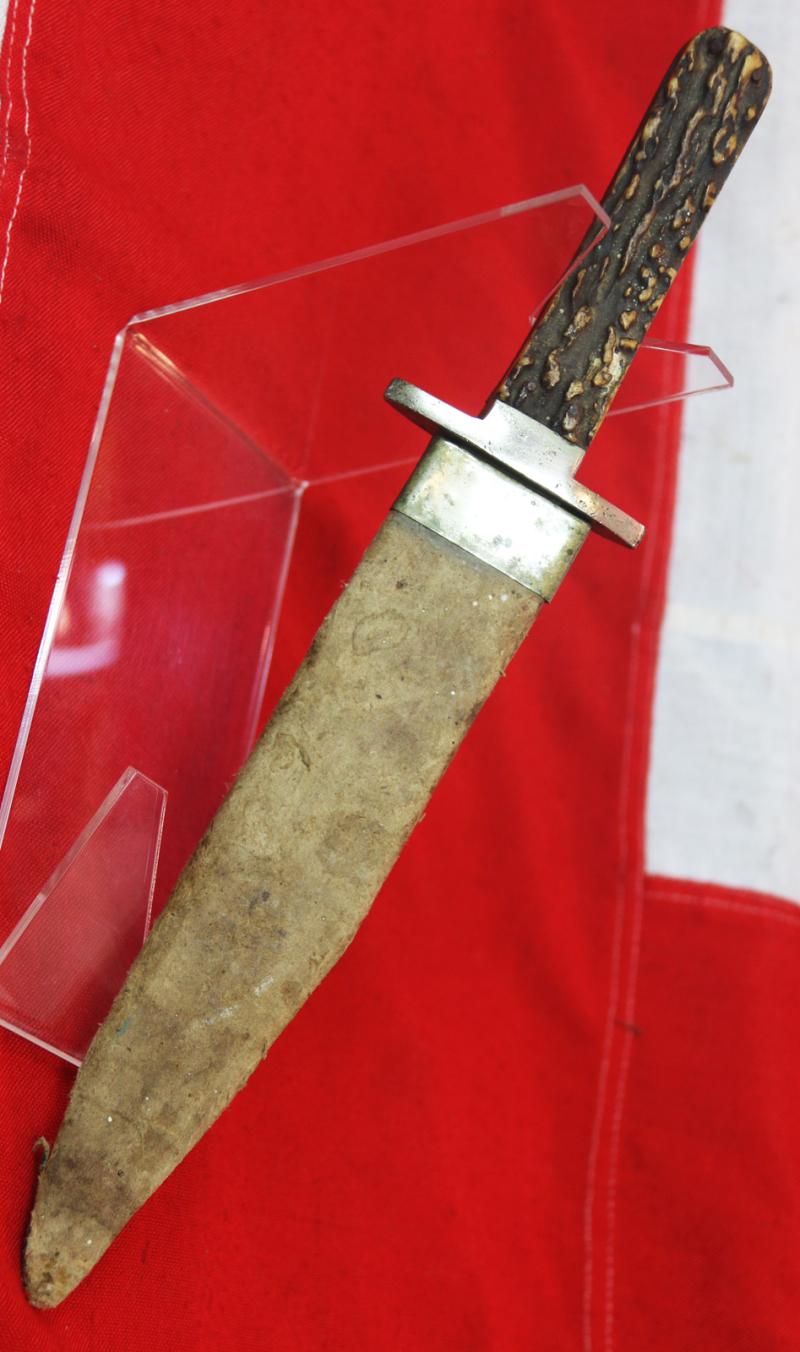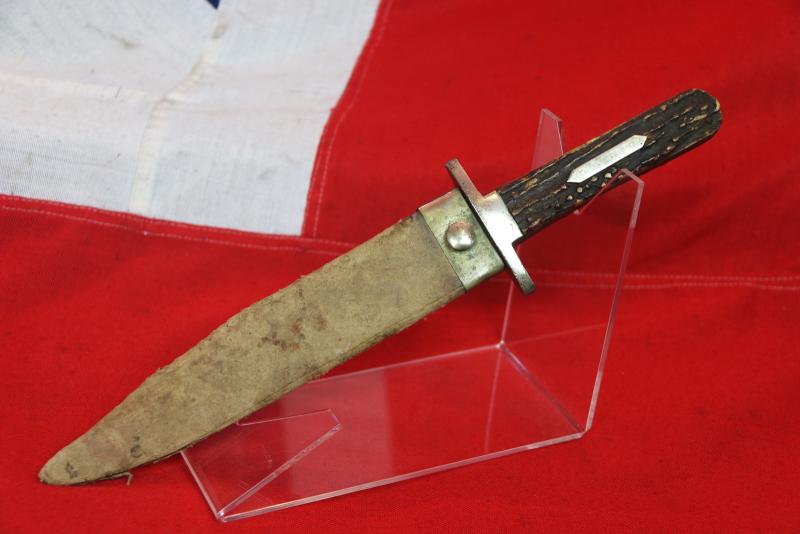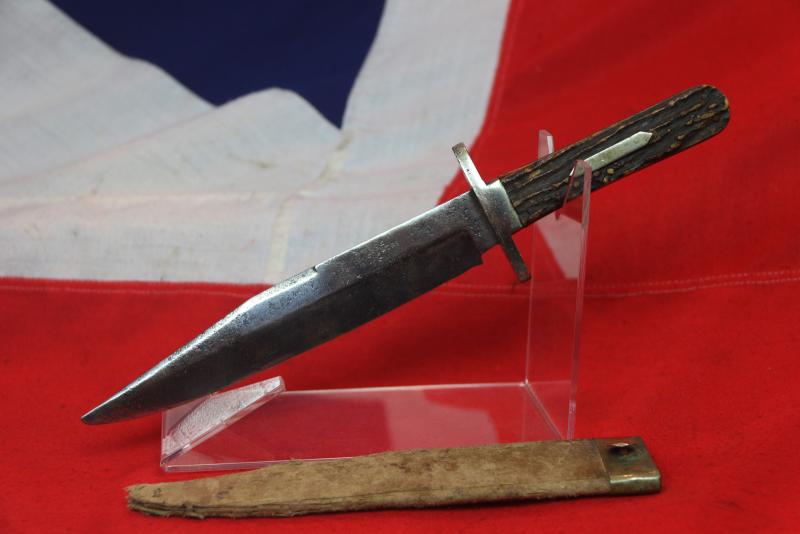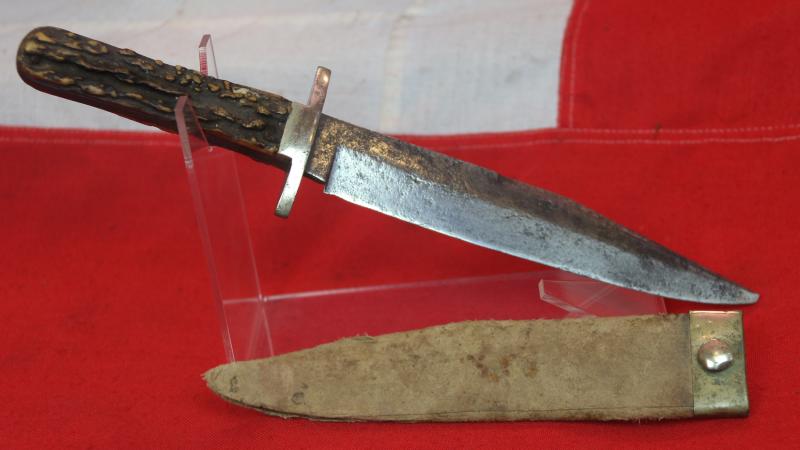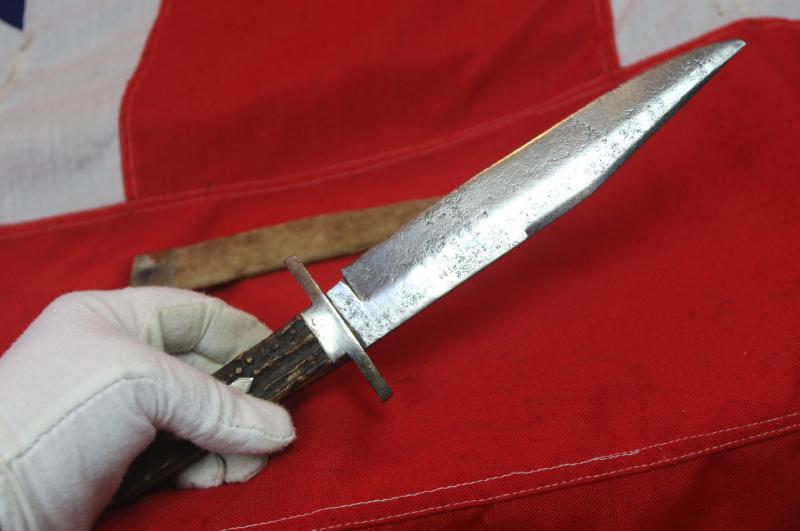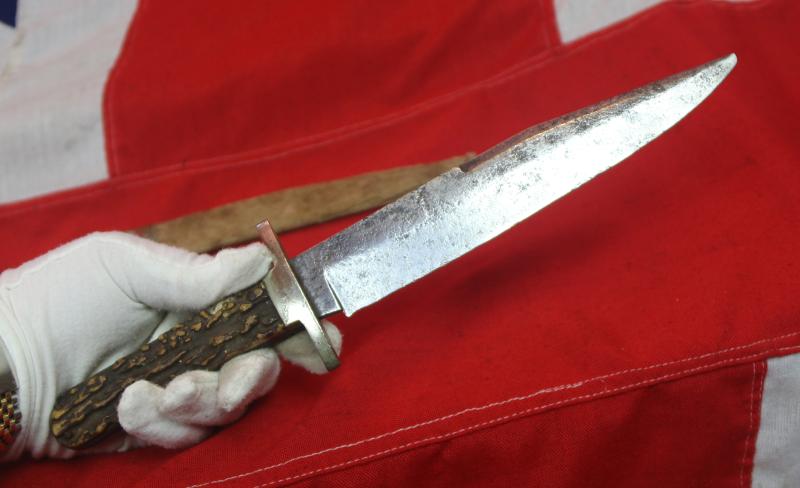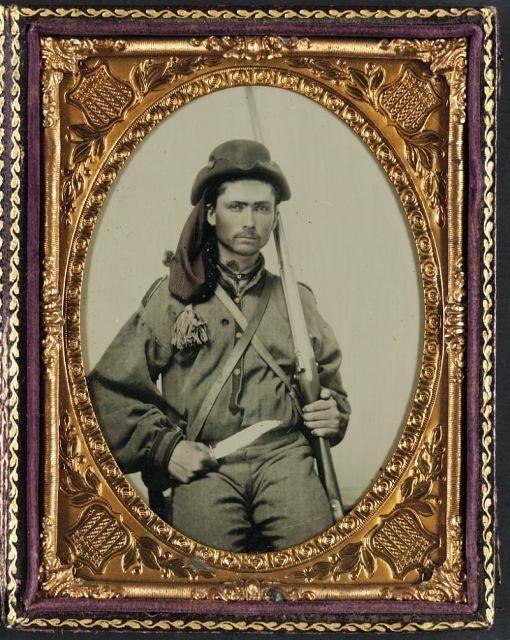A Nice US Civil War Staghorn Gripped Bowie Knife By Buck of Tottenham Court Road Circa 1855. German Silver Crossguard and Hilt Panel. With Its Original German Silver Mounted Pressed Card Scabbard.
Traditional and original American Civil War London made imported Bowie knife, with clip back blade, maker marked by its rare maker, Buck of Tottenham Court Rd, {London}.
The blade has overall salt and pepper pitting, but the German silver {nickel} hilt mounts are superb condition, as are the staghorn grip plates. The original pressed card scabbard has the surface feel of suede and it's still complete {with slight seam separation} and its original German silver throat mount and frog button belt stud.
The old traditional early Bowie knife was both a hunting knife and a tool. With it, one could clear a path, hack a sapling, dig a hole, or butcher game. In the siege of Bexar in 1835, Texans used Bowie knives to dig through roofs and walls and engage in hand-to-hand combat with the Mexicans. The knife was not designed or balanced for throwing.
Southerners replaced their sword canes with Bowie knives, and sought expert cutlers, North and South, to craft fine blades. The cutlers usually were surgical and dental instrument makers in large cities. Most signed their works; Peter Rose and John D. Chevalier were prominent in New York, English & Huber and Clarenbach & Herder in Philadelphia, Reinhardt in Baltimore, Thomas Lamb in Washington, Dufilho in New Orleans, Alfred Hunter in Newark, Marks and Rees in Cincinnati, Daniel Searles in Baton Rouge, and Rees Fitzpatrick in Natchez. Henry Schively also made improved versions in various styles. English cutlers in Sheffield, who had dominated the American cutlery market since colonial times, took advantage of the fascination with the Bowie knife. They capitalized on vivid reports by English journalists of murder and mayhem in America involving the weapon.
A trickle of Sheffield Bowie knives in the early 1830s developed into a flood before the Civil War. Bowie knife collections indicate that only about one in ten was American made. English cutlers applied clever motifs and blade etchings that appealed to American tastes and patriotic spirit. Examples include such labels as "American Bowie Knife," "Texas Ranger Knife," "Arkansas Toothpick," "Patriot's Self Defender," "Death to Abolition," "Death to Traitors," "Americans Never Surrender," "Rio Grande Camp Knife," and "I'm A Real Ripper." Handle and guard mountings also carried symbols and slogans with American appeal. Cutlers attached handles of ivory, pearl, tortoise shell, black and gray buffalo horn, India stag horn, and fine woods. Handle pommels of nickel silver featured horse heads, shells, and geometric designs. Manufacturers generally signed their blades and added such distinctive trademarks as I*XL, B4ANY, and XCEED. At the outbreak of the Mexican War in 1846, the Bowie knife was a popular weapon in Texas. Texas Rangers under Jack (John Coffee) Hayes and Ben McCulloch carried Bowie knives and Colt Dragoon pistols into battle. Knife blades stamped and etched with Mexican War motifs appeared. Zachary Taylor, mounted on Old Whitey, was a favorite subject. Bust etchings included "Old Zach," "General Taylor Never Surrenders," "Palo Alto," and "Buena Vista." Pommels featured a Taylor bust with a patriotic slogan.
In the late 1830s an alarmed public in several Southern states demanded stringent laws to curtail the increasing "rule of the Bowie knife." In January 1838 the Tennessee legislature passed "An Act to Suppress the Sale and Use of Bowie Knives and Arkansas Toothpicks in this State." However, the sale of the knives continued to accelerate, reaching a peak after the Civil War. During that war, crude Bowie knives were popular among Confederate soldiers. Some had large, wide blades, like those of artillery shorts words; most were unmarked. The Confederates considered the knife an essential accoutrements in the early months of the war, but as the conflict wore on the knife was replaced with the bayonet. The knives had hickory or hardwood handles and iron mounts, and were worn in heavy leather sheaths with throats and tips of tin, iron, or brass. Blades had scratch engravings and crude acid etchings, with such patriotic motifs as "Sunny South," "Confederate States Defender," or "Death to Yankees." A few Confederate Bowie knives were made by experienced cutlers and exhibited excellent workmanship. Union soldiers generally wore Sheffield or British made Bowie knives.
"In the history of American arms," wrote historian Harold L. Peterson (1958), "three weapons stand out above all the rest: the Kentucky rifle, the Colt's revolver, and the Bowie knife." Each became a part of the "great American Legend."
Overall in scabbard approx. 13 inches long, Blade approx. 8 inches long.
Code: 25263
795.00 GBP


